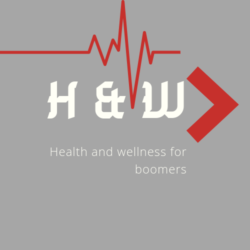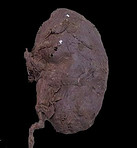THE HEART AND ITS FUNCTIONS

THE HEART AND ITS FUNCTIONS
Our h
The division is very important as it prevents oxygen-rich blood from mixing with the oxygen-poor blood that returns to the heart after circulating through our body.
- The right side of the heart, consisting of the right atrium and ventricle, collects and pumps blood to the lungs through the pulmonary arteries.
- The lungs then refresh the blood with a new supply of oxygen. The lungs also breathe out the waste product of carbon dioxide
- Then the richly oxygenated -rich blood enters the left side of the heart, comprising the left atrium and ventricle.
- The left side of the heart pumps blood through the aorta to supply tissues throughout the body with oxygen and nutrient
There are four valves within our hearts they keep our blood moving the right way by opening only one way and only when they need to.
To function properly, the valve must be formed properly, must open all the way and must close tightly so there’s no leakage. The four valves are:
- Tricuspid
- Mitral
- Pulmonary
- Aortic
Heartbeats
A beating heart contracts and relaxes in a continuous cycle.
- During contraction (systole), your ventricles contract, forcing blood into the vessels to your lungs and body.
- During relaxation (diastole), the ventricles are filled with blood coming from the upper chambers (left and right atria).
Electrical system
Your heart’s electrical wiring keeps it beating, which controls the continuous exchange of oxygen-rich blood with oxygen-poor blood. This exchange keeps you alive.
There are Various heart disease causes
Development of atherosclerosis Cardiovascular disease can refer to different heart or blood vessel problems, the term is often used to mean damage to your heart or blood vessels by atherosclerosis is a buildup of fatty plaques in your arteries.
The build-up plaque buildup thickens and stiffens artery walls, and this can inhibit blood flow through your arteries to our organs and tissues.
Atherosclerosis is also the most common cause of cardiovascular disease. It can be caused by a lifestyle that if changes are made the problems can be corrected,
Changing an unhealthy diet, for a healthier diet, lack of exercise,for some exercise for at least 30 min a day, being overweight losing weight and this will be achieved with a healthier diet and exercise and smoking, quit smoking, this may be hard to do but we can get aid from our healthcare provider
Causes of heart arrhythmia ( This list is taken from the Mayo Clinic website)
Common causes of abnormal heart rhythms (arrhythmias) or conditions that can lead to arrhythmias include:
- Heart defects you’re born with (congenital heart defects)
- Coronary artery disease
- High blood pressure
- Diabetes
- Smoking
- Excessive use of alcohol or caffeine
- Drug abuse
- Stress
- Some over-the-counter medications, prescription medications, dietary supplements, and herbal remedies
In a healthy person with a normal, healthy heart, it’s unlikely for a fatal arrhythmia to develop without some outside trigger, such as an electrical shock or the use of illegal drugs. That’s primarily because a healthy person’s heart is free from any abnormal conditions that cause an arrhythmia, such as an area of scarred tissue.https:
However, in a heart that’s diseased or deformed, the heart’s electrical impulses may not properly start or travel through the heart, making arrhythmias more likely to develop.
Causes of congenital heart defects
Congenital heart defects usually develop while a baby is in the womb. Heart defects can develop as the heart develops, about a month after conception. There are some medical conditions, medications, and genes that can play a role in causing heart defects.
Congenital heart defects usually become evident soon after birth. And the symptoms include:
- Pale gray or blue skin color (cyanosis)
- Swelling in the legs, abdomen or areas around the eyes
- In an infant, shortness of breath during feedings, leading to poor weight gain
The less serious congenital heart defects are often not diagnosed until later in childhood or during adulthood. Signs and symptoms of the not life-threatening congenital heart defects are
Easily getting short of breath during exercise or activity
- Easily tiring during exercise or activity
- Swelling in the hands, ankles or feet
Heart defects can also be age-related. As we age, our heart’s structure can change, causing a heart defect.
Heart disease symptoms caused by weak heart muscle (dilated cardiomyopathy)
There may be no signs or symptoms in the early onset of dilated cardiomyopathy disease but as the disease progress and condition worsens symptoms may occur and may include:
- Breathlessness with exertion or at rest
- Swelling of the legs, ankles, and feet
- Fatigue
- Irregular heartbeats that feel rapid, pounding or fluttering
- Dizziness, lightheadedness, and fainting
This heart disease can be inherited as well as some other diseases and, conditions or abused substances can cause this disease. some of the diseases that can contribute to the weakening of the heart muscles are -Coronary heart disease, heart attack, high blood pressure, diabetes, thyroid disease, viral hepatitis, and HIV.
Heart disease symptoms caused by heart infections ( list taken from Mayo Clinic web site)
Endocarditis is an infection that affects the inner membrane that separates the chambers and valves of the heart (endocardium). Heart infection symptoms can include:
Fever
Shortness of breath
- Weakness or fatigue
- Swelling in your legs or abdomen
- Changes in your heart rhythm
- A dry or a persistent cough
- Skin rashes or unusual spots
Endocarditis is a rare disease that involves inflammation of the lining of the heart muscles, and heart valves.
It is also known as infective endocarditis (IE), bacterial endocarditis (BE), infectious endocarditis, and fungal endocarditis.
The infection is normally caused by streptococcal or staphylococcal bacteria. Rarely, it can be caused by fungi or other infectious micro-organisms.
It is twice as common in men as in women and about 25 percent of adults 60 and above are affected.
The practicing of good hygiene can help in preventing infections and bacteria.
Heart disease symptoms caused by valvular heart disease
The heart has four valves — the aortic, mitral, pulmonary and tricuspid valves — that open and close to direct blood flow through your heart. Valves may be damaged by a variety of conditions leading to narrowing (stenosis), leaking (regurgitation or insufficiency) or improper closing (prolapse).
Depending on which valve isn’t working properly, valvular heart disease symptoms generally include:
- Fatigue
- Shortness of breath
- Irregular heartbeat
- Swollen feet or ankles
- Chest pain
- Fainting (syncope)
Heart valve disease occurs when your heart’s valves do not work the way they should In some cases the cause of heart valve disease is unknown but heart valve disease can develop before birth (congenital) or can be acquired sometime during one’s lifetime.
Risk factors for developing heart disease include: List taken from Mayo clinic website
- Age. Aging increases your risk of damaged and narrowed arteries and weakened or thickened heart muscle.
- Sex. Men are generally at greater risk of heart disease. However, women’s risk increases after menopause.
- Family history. A family history of heart disease increases your risk of coronary artery disease, especially if a parent developed it at an early age (before age 55 for a male relative, such as your brother or father, and 65 for a female relative, such as your mother or sister).
- Smoking. Nicotine constricts your blood vessels, and carbon monoxide can damage their inner lining, making them more susceptible to atherosclerosis. Heart attacks are more common in smokers than in nonsmokers.
- Certain chemotherapy drugs and radiation therapy for cancer. Some chemotherapy drugs and radiation therapies may increase the risk of cardiovascular disease.
- Poor diet. A diet that’s high in fat, salt, sugar and cholesterol can contribute to the development of heart disease.
- High blood pressure. Uncontrolled high blood pressure can result in hardening and thickening of your arteries, narrowing the vessels through which blood flows.
- High blood cholesterol levels. High levels of cholesterol in your blood can increase the risk of formation of plaques and atherosclerosis.
- Diabetes. Diabetes increases your risk of heart disease. Both conditions share similar risk factors, such as obesity and high blood pressure.
- Obesity. Excess weight typically worsens other risk factors.
- Physical inactivity. Lack of exercise also is associated with many forms of heart disease and some of its other risk factors, as well.
- Stress. Unrelieved stress may damage your arteries and worsen other risk factors for heart disease.
- Poor hygiene. Not regularly washing your hands and not establishing other habits that can help prevent viral or bacterial infections can put you at risk of heart infections, especially if you already have an underlying heart condition. Poor dental health also may contribute to heart disease.
Complications
Complications of heart disease include:
- Heart failure. One of the most common complications of heart disease, heart failure occurs when your heart can’t pump enough blood to meet your body’s needs. Heart failure can result from many forms of heart disease, including heart defects, cardiovascular disease, valvular heart disease, heart infections or cardiomyopathy.
- Heart attack. A blood clot blocking the blood flow through a blood vessel that feeds the heart causes a heart attack, possibly damaging or destroying a part of the heart muscle. Atherosclerosis can cause a heart attack.
- Stroke. The risk factors that lead to cardiovascular disease also can lead to an ischemic stroke, which happens when the arteries to your brain are narrowed or blocked so that too little blood reaches your brain. A stroke is a medical emergency — brain tissue begins to die within just a few minutes of a stroke.
- Aneurysm. A serious complication that can occur anywhere in your body, an aneurysm is a bulge in the wall of your artery. If an aneurysm bursts, you may face life-threatening internal bleeding.
Peripheral artery disease.
- . When you develop peripheral artery disease, your extremities — usually your legs — don’t receive enough blood flow. This causes symptoms, most notably leg pain when walking (claudication).
- Sudden cardiac arrest. A sudden cardiac arrest is the sudden, unexpected loss of heart function, breathing and consciousness, often caused by an arrhythmia. A sudden cardiac arrest is a medical emergency. If not treated immediately, it is fatal, resulting in sudden cardiac death.
Prevention
Certain types of heart disease, such as heart defects, can not be prevented. However, we can help prevent many other types of heart disease by making the same lifestyle changes that can improve our heart and overall health.such as:-
- Quit smoking
- Control other health conditions, such as high blood pressure, high cholesterol, and diabetes
- Exercise at least 30 minutes a day on most days of the week
- Eat a diet that’s low in salt and saturated fat
- Maintain a healthy weight
- Reduce and manage stress
- Practice good hygiene
Conclusion
Like all disease heart disease is easier to treat when detected early, so if we should speak to our health care provider if we have any concerns regarding your heart health or health in general. If there is concern about developing heart disease then have a talk with the doctor and advice will be given about steps that can be taken to reduce the risk of heart disease. This is especially important if there a history of family heart disease
Thank you so much for reading my blog. I do hope you have found this post helpful and informative please leave your questions, comments in the space provided and I will get back to you. and please drop by again
NOTE: This post includes affiliate links, which, if clicked on and a product purchased, I get a small commission (with no increase in cost to you).




